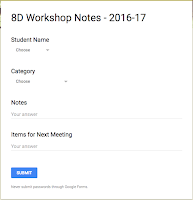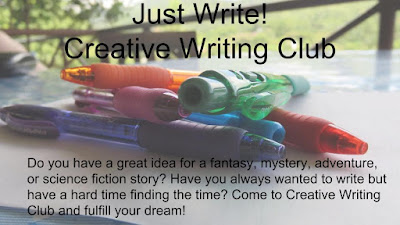The group of 8th graders snuggled together on bean bags and pillows in the reading corner, facing the visitor in the big blue chair. Ellin Keene, author of Mosaic of Thought and Talk About Understanding, held a picture book in her hand. "This looks like a children's book, I know, but I would never suggest elementary students read this. It's a book for older people like you because you are mature enough to handle the content." (Way to hook them in, Ellin!) The book was Rose Blanche by Roberto Innocenti and illustrated by Christopher Gallaz, a story about a German girl in WWII who discovers a concentration camp near her home. Ellin was doing a demo lesson with my class on inferring.
 |
| image from Amazon.com |
She introduced the idea of inferring by telling them that it's the thoughts, feelings, beliefs and actions that readers understand which were inspired by the book but are not written in the book. Throughout her reading, she kept coming back to those four ideas: thoughts, feelings, beliefs, and actions. Each time she said those words, she touched her head, her heart, put her fist in her other hand, and swept her hands out as if going into the world. I think she did that 7 times throughout the lesson. Repetition is powerful.
As she read Rose Blanche, she stopped and showed the illustrations. She pointed things out like, "Do you see where she's standing? Look at that facial expression!" And she would prep the kids to pay attention to details in the story with, "Wait until you hear what's next!" or "You are not going to believe this next part!" At one point, she asked everyone to gather close together to look at an especially important illustration. All the kids leaned in, almost piling on top of one another, to see what was on that page. It was magical!
After the read-aloud, she had pairs participate in a written conversation about the inferences they'd made in the book. It was dead silent in the room except for the sound of pencils scratching on paper.
 |
| image from wikipedia.com |
She quietly invited one struggling reader to confer with her (in front of 5 watching teachers-- oh the pressure!). He brought his independent reading book with him, Maus I: A Survivor's Tale by Art Spiegelman, a graphic novel about a Holocaust survivor. Ellin asked the boy if he thought he was doing any inferring in his book. He shrugged and said he wasn't sure, he didn't really like to read, but he thought it had "deep meaning" and connected with the book that she had just read. She asked what he meant by "deep meaning", and as he explained, she nodded and paraphrased. At the end, she exclaimed, "Everything you just told me is inferring! In fact, it's the most complex kind of inferring: empathizing with the character. You are feeling right along with the character. Did you know you were the kind of reader who could do such complex reading work?" He shook his head with a shy smile on his face. "Well you are! I am so impressed with you right now!" She ended the conference by challenging him to do more inferring work on his book, and to go back to Rose Blanche to practice some more. "I'm going to gift the class with this book, but I want you to have first crack at it!"
In just 70 minutes, Ellin was able to draw in a brand new group of 8th graders to marvel in a beautiful picture book, engage in high level thinking, articulate their thinking, and have their thinking nudged by peers and/or a teacher. During her conferences, she inspired each student to re-envision himself as a new kind of reader, one who does sophisticated thinking and doesn't just read for plot or because he has to for school. It was inspiring!
Now it's my turn. Tomorrow, my PLT is designing a pre-assessment for inferring and determining importance, and a lesson plan to implement reading strategies. This week I will give the assessment, and do the lesson over several days in the coming weeks. By winter break, I will assess again to see if they are better at these two reading comprehension skills.
I believe this is important work. As texts get more complex in middle and high school, students need to apply reading strategies effectively if they are to understand their deep and subtle meanings. By assuming students know how to do this thinking work, we are holding them back from powerful learning. True, some will eventually figure it out themselves, but doesn't every child deserve to know the "secrets" of reading well?


































